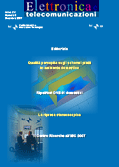 |
Cover |
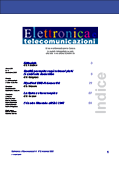 |
Contents |
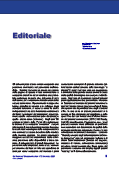 |
G.F. Barbieri
Editorial |
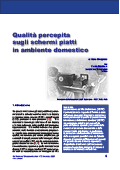 |
Mario Stroppiana
Quality on flat display perceived by the user at home
High Definition Television (HDTV) is potentially able to deliver high quality and resolution images to the home user. The amount of quality gain with respect the Standard definition television perceived by the user depends on the viewing environment and on the display characteristics. In particular, the image resolution gain can be fully perceived only on adequate display sizes at limited viewing distances. The meaning of adequate display size and limited viewing distance is the target of the paper. |
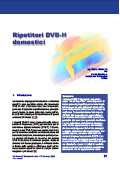 |
Davide Milanesio
Home DVB-H repeaters
Home DVB-H repeaters, also known as “Small Gap Fillers”, are low-power devices designed to be autonomously installed by the final users in their private homes, with the aim of improving indoor coverage of a DVB-H signal. As these devices radiate in the UHF band, first priority is to guarantee that no interferences are generated, potentially impairing the reception, in the same apartment or in the neighbouring flats, of the traditional analogue or digital TV programmes. For this reason, a new standard is being prepared by DVB. This paper summarises the main technical requirements imposed to home DVB-H repeaters by this standard and reports the results of field trials on the first prototypes, carried out in the lab and in a real apartment. |
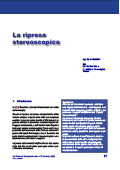 |
Mario Muratori
Stereoscopic shooting
In the stereoscopic television production is usual to exploit two - either real or virtual - cameras, to generate the signals forming a “stereoscopic pair”.
A stereoscopic shooting system based on two cameras can have only two geometrical configurations. In fact, the camera optical axes must lie on the same plane, and can either be parallel to each other or converge in a point.
In this paper the properties of the two geometrical configurations are analysed, and the relationships relating the real space with the perceived one are obtained.
|
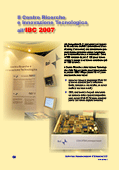 |
The Centre for Research and Technological Innovation at
IBC 2007
|